| |
"The fragmented nature of the film’s style was negatively compared to the work of Antonioni and other, more arty and respectable European auteurs at the time. But Clayton balances the stylized dissonance with his own lyricism. The Pumpkin Eater is a chilly film that sometimes bursts through with unironic emotion." |
| |
Bilge Ebiri, Vulture.com* |
Beauty is, as we all know from Margaret Wolfe Hungerford's 19th century literature, in the eye of the beholder. If this now clichéd canard is true, then there is something terribly wrong with today's marketing industry. Sex sells so therefore attractiveness must be on an identifiable scale (without recourse to Mark Zuckerberg's crass, female face comparison coding from The Social Network). I think we can all agree that we are subtly poked and prodded into settling in on what individually turns us on and what we regard as attractive. However beautiful a soul the body of Joseph Merrick housed, you'd not successfully sell a cologne with an image of the Elephant Man on the bottle. Best rely on a god of thunder or a Captain America. Our notions of beauty (from personal experience and societal persuasion) fall roughly analogous to what we are presented with as beautiful people. You won't find many men of my generation looking upon actress**. Felicity Kendall without a wistful "What if…" fantasy. And as we all know, men think about sex a lot. So if we are lucky, we run into beautiful people throughout our lives, some of whose attractiveness seems almost absolute. I am not talking about character here, the vital part in any spark of any real relationship. I'm talking about that thunderbolt, that backflip your pleasure centre does when you look at a charismatic, beautiful human being. If Ana de Armas (Joi in Blade Runner 2049) has two eyes, a nose and a mouth just like every other woman born in 1988, what makes her, her? Symmetry is the age-old wisdom. Is that still valid any more? If I can remove the sex element for a moment, sometimes it is possible to drink in someone's beauty without the desire for sex getting in the way. I had Plato on my shoulder quite often as a young man but that didn't mean that I had no less appreciation for beauty. I worked with a girl for a few years, someone that men would see in the street and drive on to the pavement blocking her way just to be introduced. That's a scary "Hi!" But I could look at her and for a few fleeting seconds submit to the idea that this heavenly creature had been created by something divine. Maybe it's just boy/girl stuff. We met up a few years ago and I have to report that her beauty is barely dented by a few decades' lines. So what have those remembered ramblings about beauty got to do with the movie?
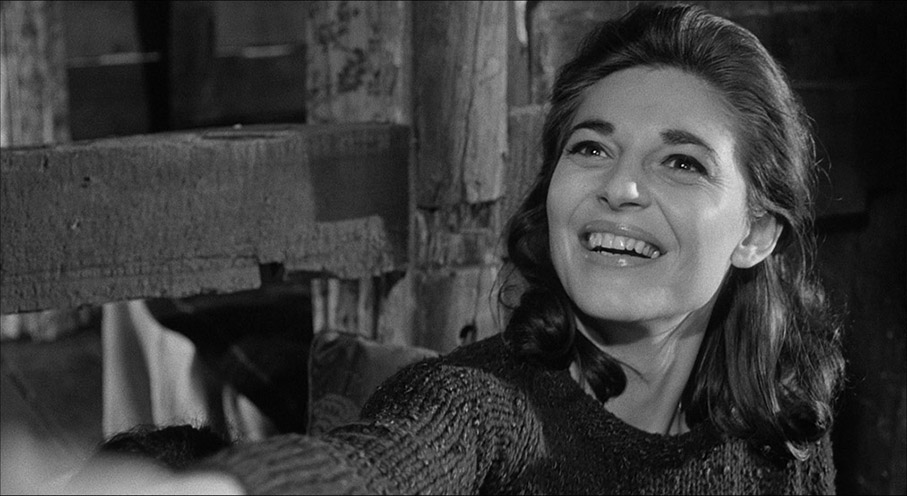
Anne Bancroft, the centre of The Pumpkin Eater's drama, has that startling attractiveness. She even wears big, old and bobbled woolly jumpers in the film, a sartorial quirk that cannot help but remind me of the girl I once worked with many years ago. When she smiles, she glows a dangerous wattage. I'm not saying I didn't appreciate the actress in later roles but it's always such a delicious shock to see actresses you know so well but who then suddenly appear reborn and captivate the lens afresh from older movies' debuts on Blu-ray. The definitive Mrs. Robinson from The Graduate was thirty-three in 1964 playing the neurotic and depressed lead character, at the glorious height of her creative and physical power. Bancroft's command of the screen is impressive. There is a moment at the climax where she has to push as many emotions through her mind as did the late, great Bob Hoskins as he was kidnapped and whisked away to be shot at the close of The Long Good Friday. This is sublime acting, invisible almost. It was here that I noticed that Bancroft, lips closed has a full stop sized opening at the very centre of her mouth (it's the shape of her lips) and when she goes to speak, her lips open like theatrical curtains, from this full stop. It's quite mesmeric. Hey, that's not creepy. I'm reacting to a film in which she's in almost every scene and with close ups galore so are we not being invited to witness her extraordinary face and all that's revealed from it? Her performance in The Pumpkin Eater is a masterclass of slow burn depression. She overflows with mental anguish but God, when she smiles… Her English accent is accepted without a thought and director Clayton's work matched with Jim Clark's sometimes stark and shocking cutting style creates an unusual flashback structure that works so much better than you might think had you been informed of it beforehand.
Incidentally, the film's odd title comes from an out-dated traditional children's rhyme; "Peter, Peter, pumpkin eater, had a wife, but couldn't keep her, so he put her in a shell and there he kept her very well." Colour me unsurprised that you rarely hear it today. It puts The Pumpkin Eater in the same club as A Clockwork Orange, interesting titles but never explained by the films themselves. But then the word 'pumpkin' could be a synonym for incest which makes a 'pumpkin eater' – sorry for even suggesting that road exists. Clean your mental palette with my full apologies. Think mind-sorbet. Ah, that's better. The story concerns Jo Armitige (Bancroft) whom we find, Bergman-like (Ingmar not Ingrid) standing at a window in some inner torment. As she moves around the room we get clues as to her affluence and standing. In 1964, a bowl of fruit on a table would be enough to signify that someone of financial means owns this house. She moves out into the driveway of her large town house and reacts to a child's scooter tenderly but flees into the garage to avoid her husband Jake (Peter Finch) who's on his way to work - screenwriters actually 'going' to work? Quaint. We move quietly into sexual politics (which would have been seen as normal in 1964) as Jake says "Do you think you're going to get over this period of your life because (leans in for a peck on the cheek) I find it very depressing." Oh, she better get well really quickly because her husband doesn't like it. There's a marriage like whiskey, potentially on the rocks. We flashback to a face we now barely recognise, a laughing, smiling, seductive woman with a plethora of children from whom she derives very obvious pleasure. Her second husband is ignored in favour of Finch whom we know she will eventually marry. After a breakdown in Harrods of all places, medical intervention is sought. Her collapse into a convulsively weeping mess is preceded by very clearly directed metaphors that she passes throughout the store. Nowhere else could you find under one roof, empty headed mannequins, birds in cages and pianos being tuned, each a metaphor of her troubled state of being if you want to read it that way. Men - in this case fathers - dictate the road of life she will traverse. Her oldest two boys are packed off to boarding school against her wishes, which almost severs all her easy emotional ties with them. The three when present together later on school holidays are often awkward and distant.
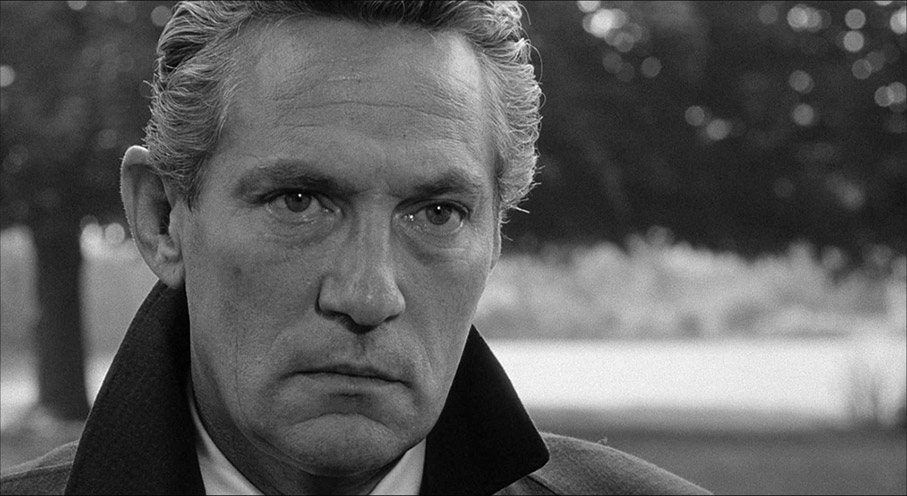
There is some initial pleasure to be had at the start of her third marriage but an old girlfriend who's moved in with them starts to catch Finch's eye. This interloper is known only by her surname, Philpot, and she's played by none other than Professor McGonagall herself, Maggie Smith, here a vibrant thirty year old. In a beautifully thought out revelation from a simple child's observation, Jo's suspicions are aroused. And so the entire marital edifice starts to crumble. We are definitely on the side of the cheated-on wife though to be fair to Harold Pinter (who adapted the vastly autobiographical source novel written by Penelope Mortimer), he rounds Jake off very nicely so he's seen as human with an emphasis on the 'man' instead of a philandering monster. Finch is right up there with Bancroft in terms of believability. The third top-billed actor, the great James Mason, is in very few scenes but he makes his presence felt. There's a scene between Finch (the adulterer) and Mason (the cuckold) that is fraught with subtext but their antagonism ends in a simple act of soft aggression that somehow makes the point very well. Finch stands up delivers a cutting remark while Mason laughs at its absurdity. Finch then pours the remains of his drink on Mason's thighs. Containing a wealth of sub-textural dick swinging, Mason says "You've made me wet." "Yes," comes Finch's effective full stop as he strolls away.
There are several stand-out scenes that deserve a mention. There's an entire long single shot that Clayton felt would play emotionally better if it were reversed. His conviction was so strong, it overrode the danger of the audience being able to work this out as the smoke curls back into the lit tip of a cigarette. There's a shot of a cat in the windmill, which is operated so well, it seems almost magical. Try panning with an animal that perfectly. It must have been take 87. As James Mason delivers bad news with some relish, Clayton has editor Clark cut in to a close up of the actor's mouth and with each sentence we cut in ever closer. It would flatter no one to be seen that close and it's the only stylistic element in the movie that feels off. Hitchcock can be credited for at least one in his towering career, an editing idea that never worked the way I suspect he imagined it would. You know the scene, at the gas station in The Birds when the fire starts to move and you get four still shots of Melanie Daniels where they should technically have shown her moving. You Tube users comment abound about this edit so I'm not alone in this though this is just my opinion. Whenever I see that edit I wonder if anyone dared question its effectiveness. In Pumpkin, there is creative framing all the way through with items being artfully placed to obscure and reveal characters. The big fight straight after Jo meets the new King of Israel (just trust me) is a flurry of limbs, staccato editing and hand held blurs of violence with the appropriate sound effects. It's hellishly effective and the cut after the last blow lands takes us to a potential cliché (from blows to bed) but it's subverted very nicely. It also took a full two days to shoot 50 seconds of screen time. I can well believe it. But the scene that sits most uncomfortably in terms of logic and effect is at the hairdressers. Jo is sitting next to a woman who recognises Jo from a Hello-like magazine photo of Jake and his abundant and beautiful family. Played by Yootha Joyce (the Mildred from the 70s spin off sit-com, George and Mildred), it's an astonishing performance, one that goes from adoring supplication to quizzical unease right the way into a fourth gear violent verbal tirade that leaves Jo reeling. It reminded me of the mental journey of the man in the joke who wants to borrow his neighbour's lawn mower. His wife cajoles him into going next-door and simply asking. So certain he is, that his neighbour would never let him borrow it, he arrives at the door, the neighbour opens it, smiles and the man says "And you can stuff your sodding lawnmower!" Joyce also gives us the nervous impression that physical violence isn't too far away.
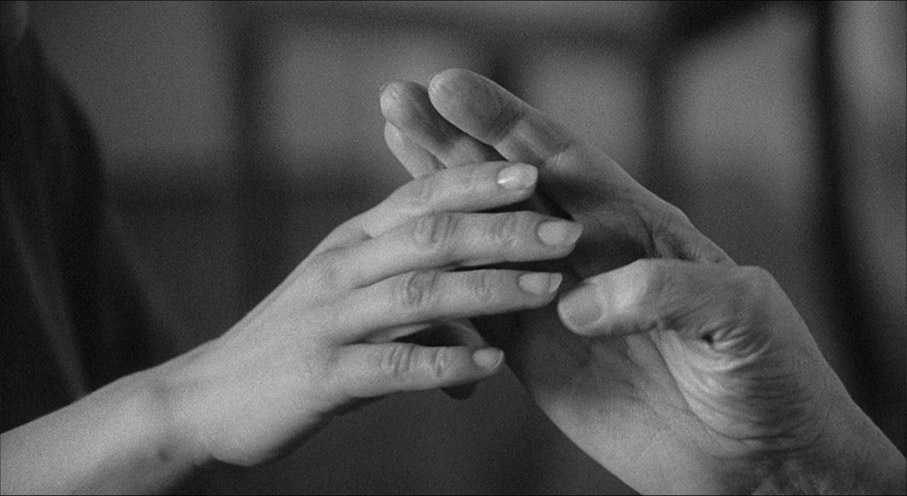
Pumpkin also features a whole host of well-known actors. Frances White as the older child Dinah had me head-scratching for a while before I gave in and IMdb-ed her. Of course, that bright-eyed young girl played straight talking Julia in I, Claudius a decade later. This was the great Cedric Hardwicke's last role, one in which he dies rather melodramatically on screen holding his screen daughter Jo's hand. Professor Moriarty in the 80s Sherlock Holmes series, Eric Porter plays the psychiatrist who asks Jo the leading question of the movie (it's all about making sex less sinful by always conceiving…) Richard Johnson plays Jo's second husband, Giles, better known to me as the doctor investigating disturbing occurrences at Hill House in the original The Haunting. Finally, I must extend a nod to Frank Singuineau as the King of Israel (trust me a second time) whose presence and metaphorical wisdom leads Jo to an emotional climax. I was also thrilled to learn that he had an uncredited role as a waiter in Dr. No. This is a terrific, emotional rollercoaster with a star turn, well recognised at the time, by one of cinema's most alluring actresses.
Presented in the 1.85:1 aspect ratio, The Pumpkin Eater looks wonderful. Contrast levels are pleasingly rendered while the ever-present grain is only the loveliest reminder that we are watching a film in the true sense of the word. The print is as clean as a whistle with no noticeable damage. With the greatest of effort I found a few tiny circular imperfections, possibly drying marks coming off the stock or off the original negative. Look hard enough and there's no film free of dust or sparkle but what few imperfections on this copy of The Pumpkin Eater exist, they are as noticeable as a stray hair in a hurricane.
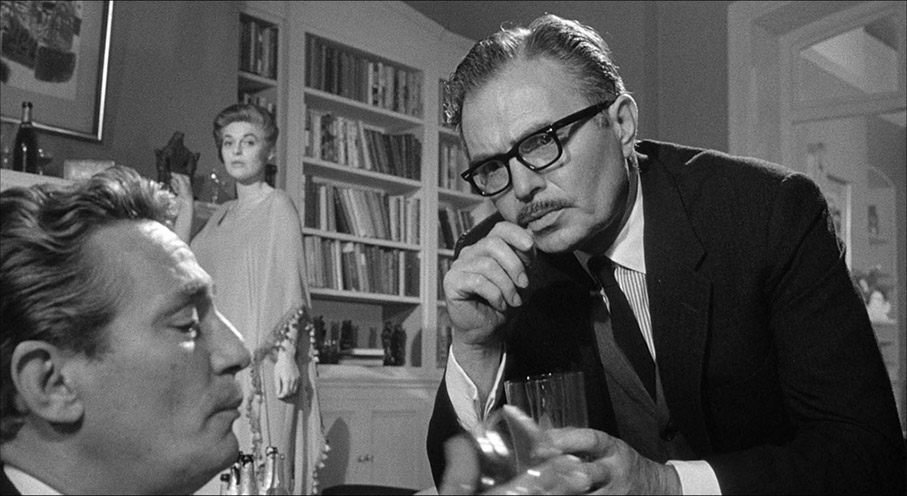
The original mono soundtrack has no line compromised and all are perfectly understandable throughout and George Delerue's undulating and mournful clarinet theme is delivered perfectly well.
There are new and improved English subtitles for the deaf and hard-of-hearing.
Scene specific audio commentary with author and film historian Neil Sinyard (2017)
Sinyard is terrifically well informed and gives you a whole new level of appreciation of the film that added details often do. I loved the idea of a cine-literate audience applauding after the Harrods scene at the Cannes Film Festival. These people know what good cinema is! I also love details like the great John Huston saying that if he died mid-production, he'd want Jack Clayton to finish his film. Wow, as compliments go that's as good as it gets. Clayton also developed a strong creative bond with his composer George Delerue – that's a relationship I find pivotal in film's evolution.
Jeremy Mortimer on Penelope Mortimer (2017): a personal remembrance by the author's son (32' 01")
This is a charming extra detailing the original novelist's life as told by her son Jeremy in an uncut mid-shot. It's illustrated with very evocative stills and after the first half, it's clear that The Pumpkin Eater is based very closely on Penelope Mortimer's own life. Her husband, John Mortimer was also a well-known author at the time, the author who gave birth to Rumpole of the Bailey. There's a fascinating anecdote about Penelope Mortimer being formally interviewed by director Clayton to write the screenplay and her answer to the question "What do you think The Pumpkin Eater is about?" obviously surprised Clayton enough to not give her the job. I think I would be as surprised. It was akin to asking George Orwell what Animal Farm was actually about and receiving the answer "Hay bales." There's the lovely tale of screenwriter Harold Pinter sending Penelope Mortimer a copy of the script with the word "Sorry," written on the cover. Sweet. Don't watch this before seeing the film as the denouement is revealed in a comparison with the ending of the book. It's fascinating stuff. Jeremy mentions the filming at Pinewood. Everywhere else I'm researching it was Shepperton. Let me check my big book of Shepperton… Yes, The Pumpkin Eater was shot at Shepperton. The reason I'm so insistent is that in the next extra, the actors mention Pinewood again. Could they all be simply mistaken because actors work in studios and some are interchangeable in their memory?***
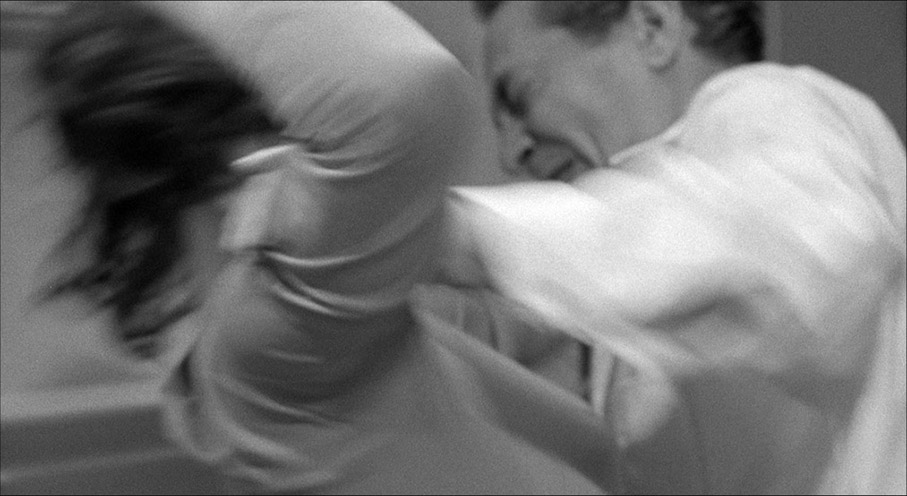
Dinah and Fergus (12' 04")
Frances White and Fergus McClelland share their memories of the production. White was 25 when she was supposed to be considerably younger but snagged the part of a 14 year old. She shares the titbit that Clayton wanted the children's skin tone and texture to be the same as Anne Bancroft's for verisimilitude. Also the idea of the director taking many takes to get it right prompts a lovely riposte from Peter Finch after a mere three takes are needed to get White's performance in the can (the average on Clayton's set was eighteen). "You trying to put the rest of us to shame, are you?" Nice
Original theatrical trailer (03' 25")
Oh, this is a belter! It intones… (over a provocative shot of bare lower legs entwined) "This is the moment they had hungered for. The phone is still, the children all in bed. Now, they are alone, just the two of them. It is the worst thing that could have happened!" cut to Bancroft smacking Finch in fury (and a lot of the fight scene follows). It's the promise of sex (which as we know, sells) and then out and out violence. Whoever put this together has been to marketing school. It's a hoot because it breaks down the pop psychology of the characters in simplistic, stark terms which the movie then completes in a much more subtle way but hey, it's a trailer.
Image gallery: on-set and promotional photography
36 black and white behind the scenes and front of house stills, some of which are presented two on screen. Then you get the promotional material with three posters two of which emphasise the strife to come if you walk into the cinema.
Brian West – Camera Operator (3' 20")
This is a short but sweet series of memories from the camera operator on the film, Brian West who underlines what a wonderful man his cinematographer was, Oswald Morris, B.S.C. He also gives us the behind the scenes low down on the fight scene (a hand held 35mm Arriflex camera wrapped in blankets so that Bancroft could assault the camera safely). I would love to have heard more. I wonder why it is so short, the longer interview covering his career perhaps with short snippets on other movies to go on further Bu-rays? In the actual movie, at 51 minutes, 10 seconds in is a great example of an invisible camera move which is Fincher like in its character following and precision. Bravo Brian West. And of course director Clayton. Re-watching the film now with my head in shot appreciation mode, there are loads of examples of complex camerawork. Absolutely extraordinary.
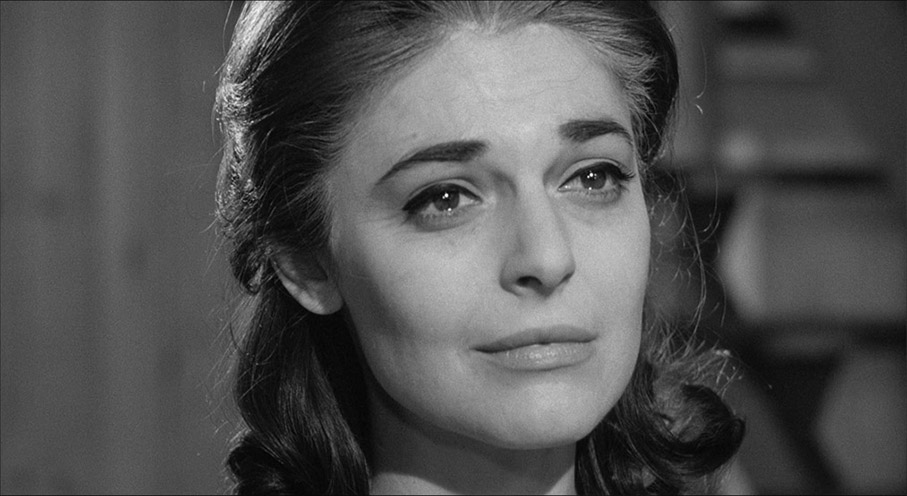
Limited edition exclusive booklet with a new essay by British-film expert Melanie Williams, an overview of contemporary critical responses, and historic articles
A cracking read all round. Melanie Williams' 'You see these claws?; The Pumpkin Eater' is a reappraisal of an overlooked gem pulling in all the opinions rampant at the time and noting an aspect of British Film criticism that gains traction every time I read legacy reviews. Launch toward the stars and you are over ambitious and pretentious, aim slightly lower and you're not fulfilling your potential. It's like all the critics in the UK had signed some sort of anti-artist pact. 'Ted Marshall on Jack Clayton and The Pumpkin Eater' by Roger Hudson gives us a rare look at the production designer's role in maintaining the correct mood with the set design given the characters that were going to inhabit them. After this article, I had a strong desire to go back to the film and try to notice the background elements but when you are up against Anne Bancroft as a focal point, your eye rarely wanders anywhere else. But it's an idea worth reiterating that each technician adds to the gestalt that is a finished film. 'Keeping up with the Antonionis' by Penelope Houston had the virtue of being written at the time of the film's release and is a wonderfully free spirited wink at the idea that British filmmakers could ever be classed as European (sound familiar?). She brings up the criticism of the Harrods walkabout shot (the legs of the heroine as if shot from her chest) as something that forces the viewer to imagine how it's done rather than feeling the emotional dislocation intended by the shot. I submit that because we have a single, two-lettered answer to that question in modern cinema, it has rendered the question practically unasked. "How did they do that?" CG. Move on. Everything to see here. Then there's 'The Pumpkin Eater, the Critical Response' in which we are treated to something that Stephen Fry once flagged up in his appearance on TV's Room 101. He said that he wanted to consign critics to Room 101 because of their bottomless arrogance that manifested itself in the idea that if only the writer and director had passed their efforts before the critics' eyes before they made the film, their work would have been much better for that exposure. Warren Beatty can tell you a few tales about involving a critic in the filmmaking process.
I'm just utterly smitten by Bancroft, the direction, photography, editing and score of The Pumpkin Eater. Just first class. Sometimes shots are so well executed you don't think about them but if you take time to examine their movements and timing, you will be wide-eyed given that no post tinkering was involved and the camera operator was wholly responsible for just getting it right. Its emotional resonance is tied to the fortunes and misfortunes of the heroine and dare I say 'adult' in the non-porn sense of the word. This is a film about grown ups for grown ups, harrowing in its way. Seeing anyone suffer is no fun but when you've seen how happy this woman can be, her distress is rendered more palpable. If you like real dramas about real people, then The Pumpkin Eater is highly recommended.
|